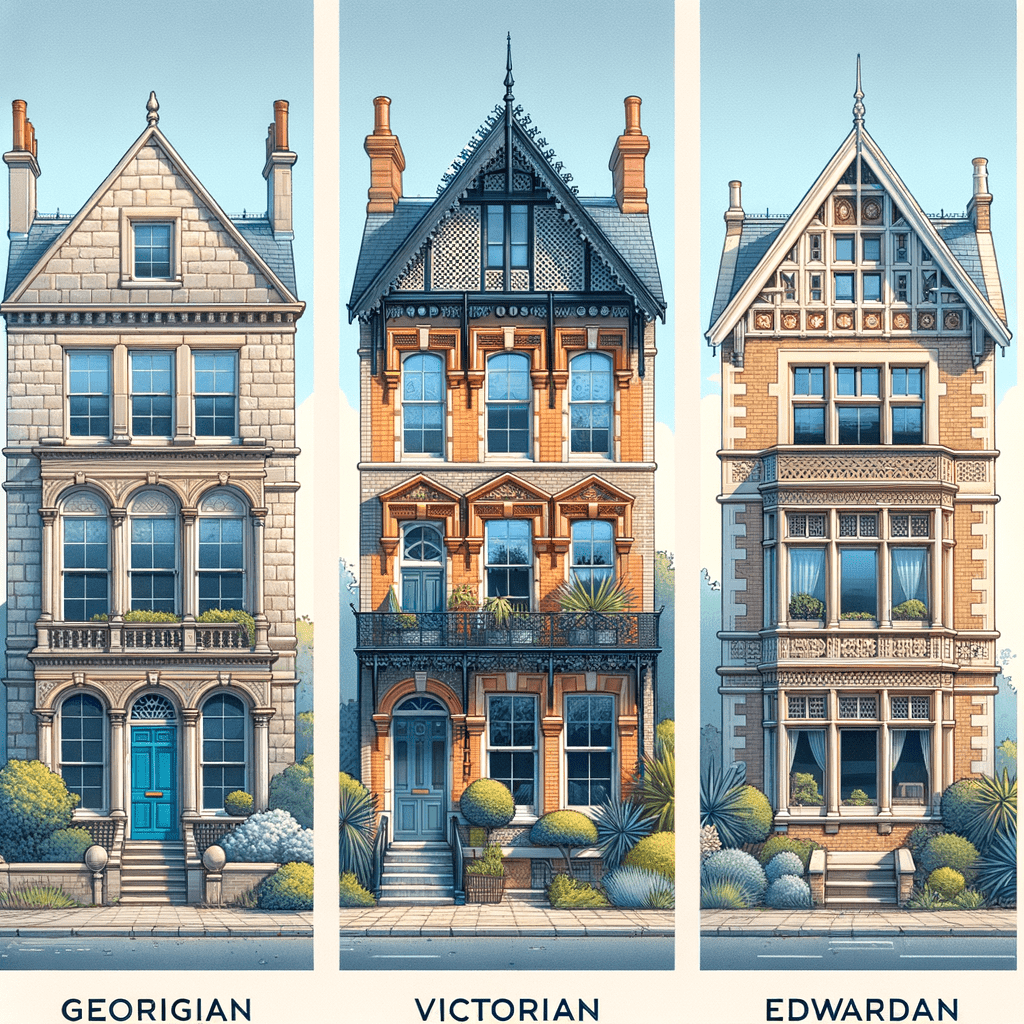Unravelling the Charm: Key Differences Between Georgian, Victorian, and Edwardian Properties
Understanding the Historical Context
The architectural landscape of the United Kingdom is a rich tapestry of history, with each era leaving its unique imprint on the buildings of the time. The Georgian, Victorian, and Edwardian periods, spanning from the 18th to the early 20th century, are particularly notable for their distinctive architectural styles. Understanding these differences is not just a matter of historical interest; it can also be a crucial factor when considering a property purchase.
Georgian Properties: Elegance and Symmetry
Named after the four King Georges who reigned from 1714 to 1830, Georgian architecture is characterised by its elegance, symmetry, and proportion. These properties often feature a panelled front door at the centre, flanked by windows arranged symmetrically on either side. The interiors are marked by high ceilings, large sash windows, and spacious rooms with a clear emphasis on balance and light.
Georgian properties are often built with brickwork, with the more affluent homes featuring stone or stucco-fronted exteriors. Fireplaces were a common feature, serving both a practical and decorative purpose. The roofs are typically hipped or end-gabled, with chimneys at both ends.
Victorian Properties: Ornate and Grand
The Victorian era, spanning the reign of Queen Victoria from 1837 to 1901, brought about significant changes in architecture. The industrial revolution led to the mass production of building materials, enabling more ornate and complex designs. Victorian properties are known for their grandeur and decorative detail, with features such as stained glass windows, patterned brickwork, and intricate woodwork.
Victorian homes often have asymmetrical layouts, with rooms branching off from a central hallway. Bay windows, high ceilings, and ornate fireplaces are common features. The roofs are typically steeply pitched with complex shapes, and may include towers, dormers, and other embellishments.
Edwardian Properties: Light and Comfort
The Edwardian period, although brief (1901-1910), ushered in a shift towards lighter, more comfortable homes. Influenced by the Arts and Crafts movement, Edwardian architecture emphasised natural materials, simple forms, and a return to craftsmanship. These properties often feature wide, tree-lined streets with substantial gardens.
Edwardian homes are typically more spacious than their Victorian counterparts, with larger rooms and wider hallways. They often feature ornate fireplaces, parquet flooring, and decorative glass in doors and windows. The exteriors are often made of red brick, with mock-Tudor cladding or white-painted woodwork.
Choosing Between Georgian, Victorian, and Edwardian Properties
When choosing between a Georgian, Victorian, or Edwardian property, consider factors such as the property’s condition, location, and suitability for modern living. Georgian properties, while elegant and spacious, may require significant upkeep and may not always meet modern standards for insulation and energy efficiency. Victorian properties, with their ornate detail and grandeur, can offer a unique charm, but may also present challenges in terms of layout and light. Edwardian properties, with their emphasis on comfort and natural light, can offer a more modern feel, but may lack the historical character of older properties.
Regardless of the period, any property purchase should be approached with careful consideration. A thorough building survey can reveal any hidden issues and ensure that your investment is sound.
At Flettons, we’re committed to safeguarding your investment. When considering a property purchase, trust our seasoned expertise to reveal any hidden threats. For a thorough building survey, get your instant quote through our quote calculator or reach out directly at 0203 691 0451. Your home’s safety is our top priority.
——————————————————————————————————————————-

